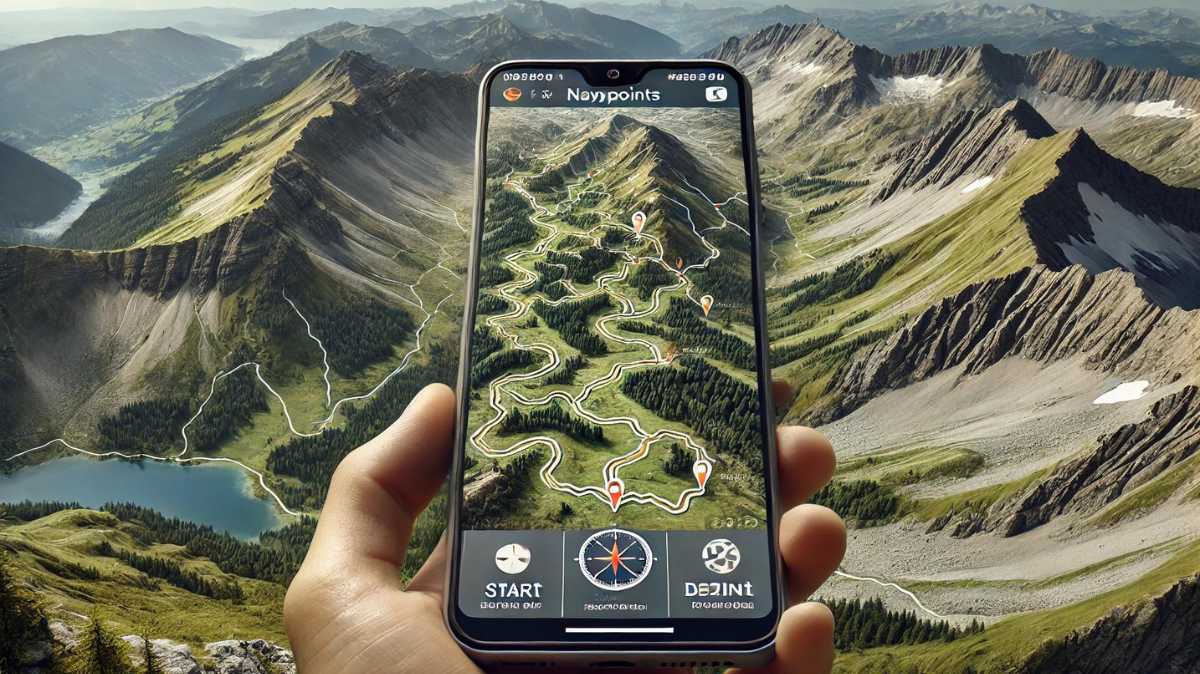In the age of technology, where GPS and digital maps rule our travel routes and adventures, there’s one term that consistently pops up, especially among navigators, travelers, and even gamers: waypoints. But what exactly is a waypoint? If you’re curious, this guide covers everything you need to know about what is a waypoint and how they are used in various forms of navigation. Is it just another fancy term for a checkpoint, or does it serve a much grander purpose? Today, we embark on a fascinating journey through the world of waypoints, exploring their origins, their uses, and why they’re more than just blips on your GPS. Buckle up!
What is a Waypoint? (The Short Answer)
A waypoint is essentially a specific geographical point that helps guide you on your journey from one location to another. It acts as a reference point, allowing travelers, hikers, drivers, sailors, and even pilots to track their progress or adjust their route.
Unlike an actual destination or end-point, a waypoint is a marker along the path that helps ensure you’re on the right track. Think of it like a signpost, but one that only you (or your GPS) can see, helping you navigate seamlessly through various terrains or routes.
Table of Contents
1. The Origin of the Term “Waypoint”
The word waypoint may sound modern, but it actually stems from much older navigation techniques. Traditionally, sailors and explorers would mark positions along their journey based on natural landmarks or known coordinates, referring to these points as “ways” along their route. This was long before Google Maps or GPS satellites started hovering above us, making things far easier (and arguably, far less adventurous).
In ancient times, a waypoint could be anything from a distant mountain peak to a notable river bend. Nowadays, it’s more likely a precise coordinate, calculated to help guide you safely to your destination.
2. Waypoints in Navigation Systems
Waypoints have revolutionized how we travel, particularly since the dawn of satellite navigation. But it’s not just the typical traveler who benefits from them. GPS (Global Positioning System) relies heavily on waypoints to make sure the directions you’re given are accurate and up to date.
In a GPS device, a waypoint is a stored location that a user can navigate to or through. It can be marked by latitude and longitude, or it could be a set of street names and coordinates.
A typical car GPS uses waypoints to guide you around traffic, dead ends, and detours, ensuring you don’t end up shouting, “I think we’re lost!” to an unimpressed passenger.
3. How Waypoints Work in GPS
GPS waypoints function through a satellite system that pinpoints your exact location using a series of coordinates. This information gets relayed to your device, which then helps calculate the most efficient route between your current position and the waypoint.
For example, if you’re driving cross-country and want to stop at various landmarks, you’d set each landmark as a waypoint. The GPS system will calculate the best way to hit all of them while keeping you on course.
Imagine your journey is a connect-the-dots puzzle. Each dot is a waypoint, guiding you from one point to the next until you’ve completed the whole picture—or in this case, reached your destination.
4. Different Types of Waypoints
While we may think of waypoints as mere “stops” on a route, they come in various forms, each serving a different purpose:
a. User-defined Waypoints
These are waypoints manually set by the user. For instance, if you’re planning a road trip, you might want to stop at a specific diner, scenic overlook, or roadside attraction. You can set these locations as waypoints in your navigation device.
b. Pre-set Waypoints
Some waypoints are already pre-loaded into your GPS or travel app. For example, popular landmarks, airports, or city centers are often set as default waypoints for easy navigation.
c. Virtual Waypoints
These don’t correspond to any physical landmark but exist as coordinates on a map. They are particularly useful in aviation and marine navigation, where landmarks might not be visible or relevant.
5. Waypoints in Aviation
Pilots depend on waypoints more than anyone else. In the aviation world, waypoints are often referred to as fixes, and they play a crucial role in ensuring safe, efficient air travel.
Aviation waypoints are virtual markers based on GPS coordinates or radio beacons, guiding planes through predefined airways (yes, even the sky has lanes). You’ll often hear pilots refer to these as part of their flight plan. Each waypoint allows the aircraft to stay on a defined route, even when it’s flying across oceans where there’s no visual reference.
Fun fact: Aviation waypoints often have quirky names like “PEACH,” “PIRAT,” and “LIONS,” which you’d never expect to encounter at 30,000 feet!
6. The Role of Waypoints in Marine Navigation
Similar to aviation, the sea has its own version of waypoints. These are crucial for ships and vessels navigating large bodies of water where visual landmarks are scarce. Marine waypoints help captains chart a course, ensuring their journey stays safe and avoids treacherous waters.
With today’s advanced navigational tools, maritime waypoints are loaded into systems that account for shifting tides, wind directions, and even pirate zones! (Yes, pirates are still a thing, and no, they don’t say “Arrr!” as often as you’d think.)
7. Waypoints in Video Games and Virtual Worlds
Gamers, this one’s for you! Waypoints are everywhere in the virtual gaming world. Whether you’re navigating through expansive open-world environments or plotting an escape from an alien ship, waypoints guide the way.
In popular games like World of Warcraft, The Witcher 3, or even Minecraft, waypoints help players find important locations, like quests, resources, or fast-travel points. In fact, certain games even incorporate waypoints as part of treasure tracking games, where players use waypoints to locate hidden treasures in virtual worlds. Without them, you might find yourself endlessly wandering—or worse, stuck in a never-ending forest!
8. Using Waypoints for Hiking and Outdoor Adventures
If you’re a fan of hiking, waypoints are your best friend. Many hikers use GPS-enabled devices to mark specific points along a trail, ensuring they stay on course or find their way back. These can be set before the hike or added on the go as they discover new areas to explore. Many hikers use GPS-enabled devices to mark specific points along a trail, similar to how geocachers hunt for hidden treasures along their route. Learn more about geocaching in this comprehensive guide on What is a geocache? Hitchiker’s Guide.
Whether you’re an experienced hiker or a geocacher, having the right tools can make all the difference. Discover the main tool used in geocaching for accurate waypoint tracking.
Pro tip: Always make sure your device is charged! Having a waypoint set won’t help if your GPS dies halfway through your adventure.
9. Creating and Storing Waypoints
Creating a waypoint is as simple as dropping a pin on a map. Whether it’s for a personal GPS, a smartphone app, or even an airplane navigation system, waypoints can be easily programmed by inputting the desired coordinates.
Most navigation systems allow users to store a large number of waypoints, which can be named and categorized for future use. Want to revisit that hidden waterfall you found last summer? Set it as a waypoint, and you’ll never have to rely on vague memory (or cryptic handwritten directions) again.
10. Why Waypoints are Crucial for Accurate Navigation
Waypoints might seem like just another feature of GPS or navigation apps, but they play a fundamental role in ensuring the accuracy of these systems. They break long routes into manageable sections, making it easier to calculate distances, travel times, and fuel consumption.
Additionally, waypoints allow for flexibility. If you need to reroute due to traffic or obstacles, your GPS can use waypoints to adjust the course while still hitting your intended stops.
11. Waypoints in Smart Travel Apps
Modern travel apps have taken the concept of waypoints and run with it. Apps like Google Maps or Waze use real-time waypoints to guide users through traffic, suggesting alternate routes and stops along the way. You can even plan complex trips by adding multiple waypoints to your route, ensuring you don’t miss out on any essential pit stops—like that must-visit taco joint.
Final Thoughts
Waypoints are much more than mere markers on a map. They represent precision, direction, and control in navigation, whether you’re piloting a plane, sailing the seas, or just trying to avoid rush hour traffic. Understanding how to effectively use waypoints can enhance not just your travel, but your overall sense of direction, literally and metaphorically.
So, next time you fire up your GPS, don’t just think of it as leading you from A to B. Think of all those waypoints along the way—guiding, protecting, and helping you on your journey.
For a deeper understanding of waypoints and their diverse applications in modern navigation, you can always refer back to this comprehensive guide on what is a waypoint.
FAQs: What is a Waypoint?
1. What is a waypoint in navigation?
A waypoint in navigation refers to a specific geographic point that helps guide travelers along a route. These points are marked by GPS coordinates or physical landmarks, assisting in both land and sea travel to ensure the traveler stays on course to the final destination.
2. How do waypoints work in GPS systems?
Waypoints in GPS systems function by storing the coordinates of a specific location. The GPS device uses these waypoints to calculate the best route between two or more points, helping users navigate efficiently from their current location to the waypoint or beyond to a final destination.
3. Can you set multiple waypoints on a single trip?
Yes, you can set multiple waypoints on a trip. Most GPS systems and navigation apps allow you to input multiple waypoints to plan your journey, making it easy to visit several locations along the way or follow a customized route.
4. How are waypoints used in aviation?
In aviation, waypoints are essential for flight navigation. These waypoints, often called “fixes,” are virtual points defined by GPS coordinates or radio beacons, guiding airplanes along their flight paths and helping pilots follow predetermined air routes, especially over long distances or areas without visible landmarks.
5. Can you create waypoints on mobile navigation apps like Google Maps?
Yes, most modern navigation apps, including Google Maps and Waze, allow users to create and save waypoints. These can be used to plan routes with multiple stops, helping users optimize their journeys by adding specific points of interest or rest stops along the way.
6. What’s the difference between a waypoint and a destination?
A waypoint is a specific location along your route that helps guide you toward your final destination. It’s not the end point, but rather a reference point or check-in along the way, ensuring you’re on the right track.
7. Why are waypoints important for hikers and outdoor adventurers?
Waypoints are crucial for hikers and adventurers because they allow for precise navigation in outdoor settings, where trails might not always be clear. By marking key points along a route, waypoints help ensure that hikers stay on course and can find their way back to their starting point safely.
8. Are waypoints used in geocaching?
Yes, waypoints are heavily used in geocaching. They mark the locations where hidden treasures or caches are placed, guiding geocachers to the precise spots based on GPS coordinates. Waypoints are an essential tool in this global treasure-hunting game.

